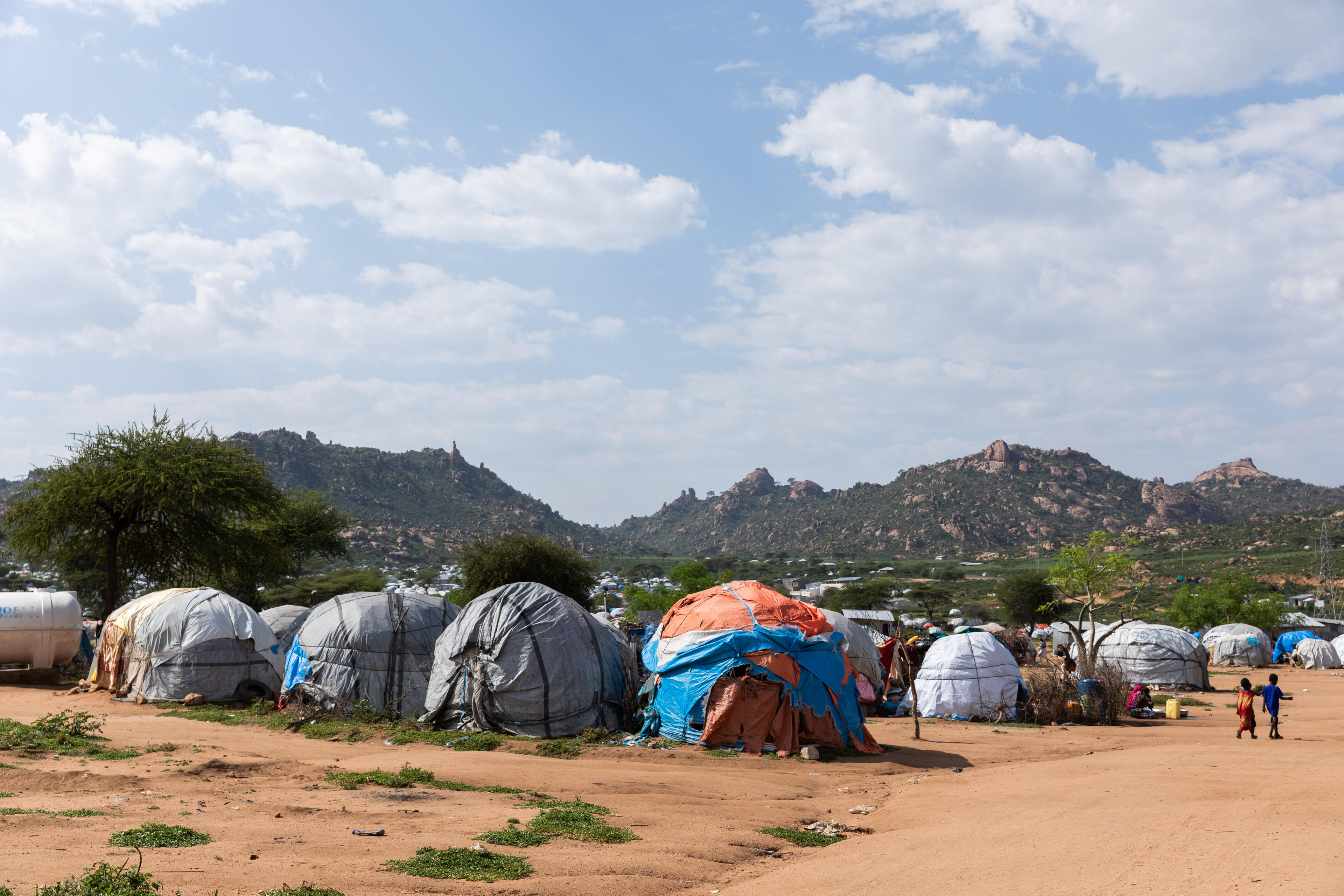
Crisis in Ethiopia: Climate change meets conflict
Here are five reasons the International Rescue Committee’s Emergency Watchlist ranks Ethiopia as the country, after Afghanistan, most at risk of worsening humanitarian crisis in 2022.

Here are five reasons the International Rescue Committee’s Emergency Watchlist ranks Ethiopia as the country, after Afghanistan, most at risk of worsening humanitarian crisis in 2022.
Ethiopia rose into the Watchlist Top 5 last year as conflict escalated in the northern Tigray region. A year later, the risk of drought due to the “La Niña” effect, combined with continuing conflict in Tigray and the neighbouring Amhara and Afar regions, are pushing the country even further up the list—to number 2. Here's what you need to know about the growing humanitarian crisis in Ethiopia.
Conflict broke out between the federal government and the Tigray People’s Liberation Front (TPLF) in November 2020. Since then, there have been several rounds of fighting. In June 2021 the federal government declared a “unilateral ceasefire,” but this has not brought an end to the conflict. Instead, fighting continues to affect parts of Tigray, Amhara and Afar.
The United States has claimed that 900,000 people are facing famine conditions in Tigray, although these figures cannot be verified due to restrictions on humanitarian access. What can be said with more certainty is that Ethiopia is highly exposed to the impacts of climate change, which is causing increasingly frequent and severe drought and flooding that are likely to drive up needs for millions across the country.
Conflict in northern Ethiopia has led over 2 million people to be displaced and left millions in need of humanitarian assistance.
Conflict in northern Ethiopia has led over 2 million people to be displaced and left millions in need of humanitarian assistance,” says Madiha Raza, the IRC’s senior global communications officer for Africa and Yemen. “Coupled with weather shocks, COVID-19, no end in sight for the conflict and insufficient humanitarian access, millions of people will fall into further need if the crisis continues unabated.
In strong partnership with local nonprofit organisations, we distribute cash and basic emergency supplies, including for women and girls, and build and maintain safe water supply systems and sanitation facilities. The IRC also supports government partners and community workers in primary health care clinics, constructs classrooms and trains teachers, and provides livelihoods-related training and job opportunities to youth and at-risk households.
Learn more about the IRC’s Ethiopia response.
Donate now to support the IRC's life-changing work in Ethiopia and worldwide. We are on the frontlines providing critical aid to crisis-affected people in more than 40 countries, including places on the 2022 Emergency Watchlist.